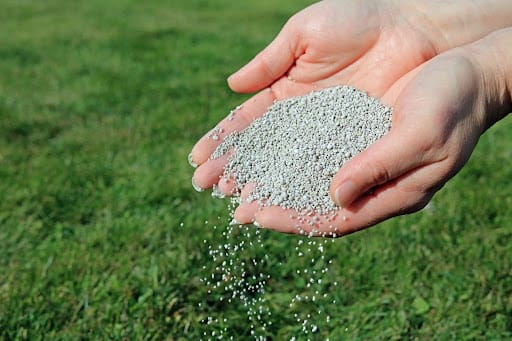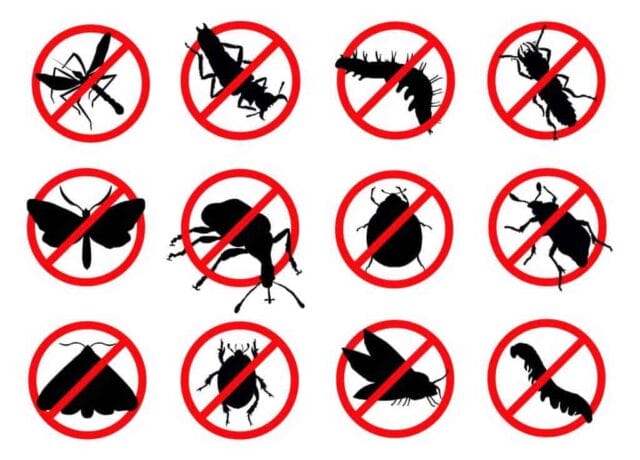How to Protect Your Lawn and Landscaping During Winter: Essential Winter Landscaping Tips
By Innovation Grounds
When the temperature starts to dip and winter settles in, it can be easy to forget about your lawn and landscaping needs. However, winterizing your outdoor spaces is just as important as caring for them during the warmer months. In fact, the cold season presents unique challenges that can leave your lawn vulnerable to damage if not properly protected.
In this comprehensive guide, we’ll explore essential winter landscaping tips and lawn maintenance for Texas homeowners, highlighting the best practices for lawn protection during the colder months. With these tips, you can ensure your lawn and landscaping not only survive the winter but thrive come spring.
1. Rethink Lawn Mowing Before Winter Arrives
One of the most important aspects of lawn maintenance in Texas (or any region with a mild winter) is adjusting your mowing routine before the colder weather settles in. A common mistake homeowners make is mowing their lawn too short in the fall.
Winter Landscaping Tip:
Gradually lower your mower height in the weeks leading up to winter, but avoid cutting the grass too short. Keeping grass about 2.5 to 3 inches in length helps it retain moisture and resist the stress of cold weather. Longer grass also helps to insulate the roots from the freezing air.
If your lawn is already struggling or suffering from dry patches, reduce your mowing frequency in the fall to allow the grass to develop deeper roots, making it more resilient to the cold.

2. Fertilize Your Lawn in the Fall
Many homeowners overlook the importance of lawn protection during the winter months. Fertilizing your lawn before the first freeze can significantly improve its health and ability to bounce back when spring arrives.
Winter Landscaping Tip:
Apply a slow-release fertilizer designed for winterization in late fall. This will help your lawn store nutrients and prepare for the dormant season. For areas like Texas, where winters are relatively mild, a fertilizer with a higher potassium content is ideal, as it helps the grass survive through cold stress and drought conditions.
Additionally, organic fertilizers can be a good option to improve soil health without introducing harsh chemicals. Be sure to follow the manufacturer’s instructions for the correct amount to apply, and make sure to water the lawn thoroughly after fertilizing to help the nutrients penetrate the soil.


3. Aerate Your Lawn Before Winter Sets In
Aerating your lawn before winter can greatly improve its overall health. Aeration involves perforating the soil with small holes to allow air, water, and nutrients to reach the grass roots more effectively. This process can be especially helpful in Texas, where the soil may be compacted due to the heat and drought conditions during the summer.
Winter Landscaping Tip:
Perform aeration in the early fall, before the ground freezes. The best time is typically when the soil is moist, but not overly saturated, as this allows the aerator to penetrate the ground more effectively.
By aerating your lawn, you encourage deep root growth, which will help your grass stay strong and healthy through the winter and into the spring growing season.


4. Water Your Lawn Properly Before It Gets Too Cold
While winter tends to bring more rain, it’s important to monitor your lawn’s hydration levels, especially in areas like Texas where rainfall is inconsistent throughout the season. Grass continues to need water throughout the winter, albeit less than in the warmer months.
Winter Landscaping Tip:
Water your lawn deeply and infrequently in the fall, particularly before a cold snap. Make sure the grass receives at least an inch of water per week, depending on the climate in your area. This helps ensure that the roots are well-hydrated and prepared for winter dormancy.
Avoid overwatering, as wet soil during freezing temperatures can lead to the development of mold or fungus. Pay attention to the weather forecast and adjust your watering schedule accordingly. Once the ground freezes, you can stop watering until temperatures warm up again.


5. Protect Your Lawn from Heavy Foot Traffic
During the winter months, lawns can be particularly susceptible to damage from foot traffic, especially when they’re dormant. The grass becomes more fragile and compacted, and walking on it can cause lasting damage that affects the lawn’s ability to recover in the spring.
Winter Landscaping Tip:
Try to limit foot traffic on your lawn during the winter. If you need to walk across the lawn, use stepping stones or a designated path to avoid compacting the soil and damaging the grass. If possible, designate areas of the yard for play or entertaining, and ensure these areas have proper drainage.


6. Protect Your Landscaping with Mulch and Covers
Landscaping plants are vulnerable to the freezing temperatures and potential frost damage during the winter. A layer of mulch can help insulate plant roots, retain moisture, and protect tender shrubs and flowers.
Winter Landscaping Tip:
Apply a 2- to 3-inch layer of mulch around plants, especially those that are more susceptible to cold. Be sure not to pile mulch directly against the stems or trunks of plants, as this can lead to rot. Instead, spread the mulch evenly around the base, leaving some space around the plant itself.
If you have particularly delicate or frost-sensitive plants, consider using frost cloths or burlap covers to protect them from freezing winds. These covers can trap heat from the soil and provide a barrier against frost while still allowing some airflow.


7. Prune Dead or Damaged Branches
Before the winter weather sets in, take the time to prune any dead or damaged branches on your trees and shrubs. Pruning not only helps to maintain the shape and health of your landscaping but also reduces the risk of breakage during ice storms or heavy snowfalls.
Winter Landscaping Tip:
Focus on removing branches that are dead, diseased, or damaged. Make clean cuts just outside the branch collar (the swollen area where a branch meets the trunk) to prevent damage to the rest of the tree. If you live in an area prone to snow or ice storms, remove any branches that could pose a risk of breaking or falling on structures or walkways.
Avoid heavy pruning during the winter months, as it can lead to new growth that may not survive the cold. Late winter or early spring is the best time for more significant pruning or shaping.


8. Keep Your Lawn Free of Debris
During winter, leaves and other debris can accumulate on your lawn, blocking sunlight and causing moisture to build up, which can lead to mold, mildew, or fungal growth. These issues can damage your grass and hinder healthy regrowth in the spring.
Winter Landscaping Tip:
Regularly rake or blow leaves and debris off your lawn during the fall and early winter. If you have a large yard, consider mulching leaves with a mower to break them down into small pieces that can nourish the soil.


9. Monitor for Pests and Diseases
Even though pests tend to be less active in the winter, some can still pose a threat to your lawn and landscaping. Insects such as grubs and winter moths can cause damage to your grass or plants if left unchecked.
Winter Landscaping Tip:
Inspect your lawn periodically for signs of pests. If you notice unusual patterns of browning or wilting, investigate further to determine if pests or disease are the cause. If necessary, contact a professional pest control service to manage any infestations.


Conclusion
Proper lawn protection and winter landscaping techniques are essential for maintaining a healthy, beautiful lawn and garden throughout the colder months. By following these winter landscaping tips, you can minimize damage to your lawn and plants, ensure proper care, and set yourself up for success come springtime. Whether you’re in Texas or another region with mild winters, these tips will help your landscaping thrive year-round.
Winter may seem like a time to relax when it comes to lawn care, but with just a few extra steps, you can help your lawn and landscaping emerge from the season in great shape. By incorporating these strategies into your routine, you’re setting your outdoor space up for long-term success!



